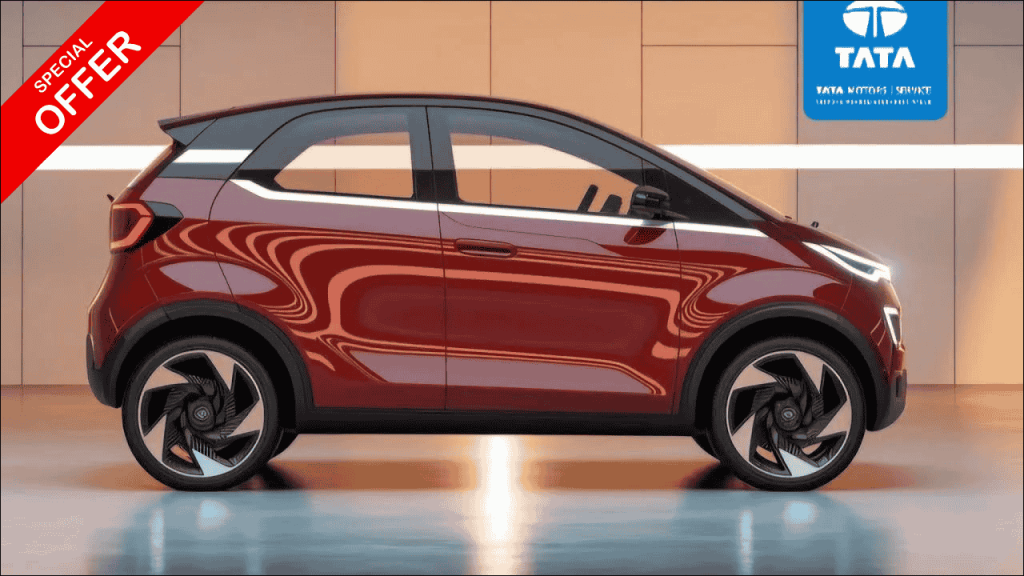
The Tata Nano remains one of the most revolutionary vehicles in automotive history, earning its place as the “People’s Car” that democratized automobile ownership in India. While production officially ended in 2020, the used car market presents an excellent opportunity for budget-conscious buyers to experience this engineering marvel. With its unique combination of affordability, practical design, and surprising functionality, the Tata Nano continues to offer exceptional value for those seeking their first car or an economical city commuter.
The Revolutionary Concept Behind Tata Nano
When Tata Motors launched the Nano in 2008, it challenged every conventional wisdom about car manufacturing and pricing. The vision was audacious yet simple: create a safe, comfortable four-wheeler that cost no more than a high-end motorcycle. This ambitious project, spearheaded by Ratan Tata, aimed to transition millions of Indian families from two-wheelers to four-wheelers, providing enhanced safety and comfort without breaking the bank.
The Nano represented a paradigm shift in automotive engineering, proving that intelligent design and innovative manufacturing processes could deliver a functional vehicle at an unprecedented price point. Despite its market challenges, the car’s engineering achievements and cost-effectiveness principles continue to influence automotive design worldwide.
Engine Performance and Technical Specifications
At the heart of the Tata Nano lies a compact yet efficient 624cc petrol engine that delivers surprising performance for its size. This rear-mounted, two-cylinder engine produces approximately 35 horsepower and 51 Nm of torque, providing adequate power for city driving conditions. The engine’s design prioritizes fuel efficiency and reliability over raw performance, making it perfect for urban commuting.
The Nano’s lightweight construction, weighing just around 600 kilograms, contributes significantly to its impressive fuel economy. Most variants deliver between 20-25 kilometers per liter, making it one of the most fuel-efficient cars ever produced. This exceptional mileage translates to significant savings on fuel costs, especially important for budget-conscious buyers.
Technical Specifications Overview
| Specification | Details |
|---|---|
| Engine Type | 2-cylinder, petrol, rear-mounted |
| Displacement | 624cc |
| Power Output | 35 HP @ 5500 RPM |
| Torque | 51 Nm @ 4000 RPM |
| Transmission | 4-speed manual |
| Fuel Tank | 15 liters |
| Mileage | 20-25 kmpl (city/highway combined) |
| Top Speed | 105 km/h |
| Kerb Weight | 600 kg (approximately) |
Interior Design and Comfort Features
Despite its compact exterior dimensions, the Tata Nano’s interior design maximizes space utilization through clever engineering. The cabin can comfortably accommodate four adults, though rear passengers may find legroom limited on longer journeys. The upright seating position and large windows create an airy feel that belies the car’s small footprint.
The dashboard design emphasizes functionality over luxury, featuring a simple layout with essential controls within easy reach. Early models came with basic amenities, but later variants offered significant improvements including air conditioning, power windows, and enhanced interior materials. The seats, while not luxurious, provide adequate comfort for city driving and short trips.
Storage solutions throughout the cabin demonstrate thoughtful design, with door pockets, glove compartments, and strategically placed cup holders maximizing utility in the limited space. The rear seats can be folded to create additional cargo space, making the Nano surprisingly practical for its size category.
Model Variants and Evolution
Throughout its production run, Tata Motors introduced several variants of the Nano, each building upon the basic concept while adding features and improvements based on customer feedback and market demands.
Tata Nano Variant Comparison
| Variant | Launch Year | Key Features | Price Range (Launch) |
|---|---|---|---|
| Nano Standard | 2008 | Basic model, no AC, manual windows | ₹1.00 lakh |
| Nano CX | 2009 | Air conditioning, power steering | ₹1.60 lakh |
| Nano LX | 2010 | Premium interior, music system | ₹1.85 lakh |
| Nano Twist | 2014 | Power steering, improved safety | ₹2.36 lakh |
| Nano GenX | 2015 | Automatic transmission option, enhanced features | ₹2.39 lakh |
Current Market Availability and Pricing
With production discontinued, the used car market represents the primary avenue for acquiring a Tata Nano. Current market prices vary significantly based on the model year, variant, condition, and mileage. Well-maintained examples from recent years command higher prices, while older models offer exceptional value for extremely budget-conscious buyers.
Used Car Market Analysis
| Model Year | Expected Price Range | Typical Mileage | Condition Notes |
|---|---|---|---|
| 2008-2010 | ₹50,000 – ₹1.20 lakh | 40,000-80,000 km | Basic variants, require inspection |
| 2011-2014 | ₹1.00 – ₹2.00 lakh | 30,000-60,000 km | Better features, improved reliability |
| 2015-2018 | ₹1.50 – ₹2.80 lakh | 15,000-40,000 km | Latest features, best condition |
| 2019-2020 | ₹2.00 – ₹3.50 lakh | 5,000-20,000 km | Nearly new, limited availability |
Advantages of Owning a Tata Nano
Economic Benefits
The Nano’s primary advantage lies in its exceptional affordability across all ownership aspects. Low purchase prices, minimal insurance costs, reduced maintenance expenses, and excellent fuel economy create a compelling economic proposition. Registration fees, road taxes, and other statutory charges remain among the lowest in the automotive segment.
Urban Mobility Excellence
For city driving, the Nano excels with its compact dimensions making parking effortless even in congested urban areas. Its tight turning radius and responsive steering provide excellent maneuverability in traffic, while the elevated seating position offers good visibility of surrounding traffic conditions.
Environmental Considerations
The Nano’s small engine and lightweight construction result in lower emissions compared to larger vehicles. Its excellent fuel efficiency means reduced carbon footprint per kilometer traveled, making it an environmentally conscious choice for eco-minded buyers.
Maintenance and Service Considerations
Tata Motors continues to provide service support for existing Nano owners through its extensive network of service centers across India. Spare parts remain readily available, though some specialized components for newer variants may have longer lead times. The simple mechanical design keeps maintenance costs low, with routine servicing typically costing between ₹2,000-₹4,000 depending on the service requirements.
Regular maintenance focuses on engine oil changes, filter replacements, and basic checks of electrical systems. The car’s simple design means most local mechanics can handle routine repairs, though complex issues should be addressed at authorized service centers to ensure proper diagnostics and genuine parts usage.
Investment Perspective and Resale Value
While the Nano may not appreciate in value like classic cars, well-maintained examples hold their value reasonably well in the used car market. The discontinued status has created a niche collector interest, particularly for pristine examples of unique variants like the automatic transmission GenX models.
For buyers seeking maximum value retention, focus on newer models with comprehensive service records, original documentation, and minimal modifications. Limited edition variants or those with unique color schemes may command premium prices among enthusiasts.
Buying Tips for Prospective Nano Owners
When considering a used Tata Nano purchase, thorough inspection becomes crucial. Check for signs of accidents, flood damage, or excessive wear. Verify all electrical systems function properly, especially air conditioning in equipped variants. Engine condition assessment should include checking for unusual noises, smooth idle, and proper temperature regulation.
Documentation verification ensures clear ownership transfer and helps avoid legal complications. Insist on seeing original registration documents, insurance papers, pollution certificates, and complete service history when available.
Frequently Asked Questions
Is the Tata Nano suitable for highway driving? While capable of highway speeds, the Nano is primarily designed for city use and may feel underpowered on steep inclines or during high-speed overtaking.
How reliable is the Tata Nano’s engine? With proper maintenance, the Nano’s engine is quite reliable, though early models may require more frequent attention than newer variants.
Can I still get spare parts for my Tata Nano? Yes, Tata Motors continues to supply spare parts through its service network, though availability may vary for some specialized components.
What’s the average maintenance cost per year? Annual maintenance typically ranges from ₹8,000-₹15,000 depending on usage patterns and required repairs.
The Tata Nano represents an unique opportunity to own a piece of automotive history while enjoying practical, economical transportation. Its combination of affordability, efficiency, and urban-friendly design continues to make it an attractive proposition for budget-conscious buyers seeking reliable four-wheeler transportation. Whether as a first car, city commuter, or backup vehicle, the Nano delivers exceptional value that few other vehicles can match in today’s market.













